NEWS- Cougar uncaptured: Going undercover to catch...?
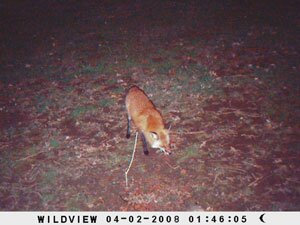
This red fox feasted on Humphreys' leftovers.
REMOTE PHOTO BY COURTENEY STUART
Remember Dateline's hit series "To Catch a Predator"? Well, the Hook has its own version now– featuring a kitty, not kiddies– thanks to National Geographic photographer Nick Nichols and a month-long sting operation to catch this area's most notorious predator: the elusive Crozet cougar.
Back in February and March, Crozet resident Susie Humphreys made front page news with her claims to have seen a very large, long-tailed cat prowling her St. George Avenue home's backyard, eating her dogs' food, and even scratching on her granddaughter's basement bedroom window.
But when a motion-sensitive camera mounted by wildlife officials in Humphreys' backyard failed to capture the cougar during two four-day sessions in March, doubts– and Humphreys' frustration– returned, particularly when she learned she'd need to gather her own photographic proof of the cougar's existence before she'd get any more help from the state.
"And how am I supposed to do that?" she asked, noting her limited income and lack of spare cash for a motion-sensitive camera.
The Hook listened to her plea and went straight to the expert at capturing big cats on film. World-renowned for his photographs of wildlife, including the stunning photos of tigers, elephants, and apes displayed as Downtown Mall banners last spring, National Geographic photographer Nick Nichols knows his way around a motion-sensitive camera– and he also just happens to live in Crozet.
"I'd love to talk about the Crozet cougar," Nichols said one March afternoon, days before leaving on one of his frequent overseas trips. Like the wildlife officials, Nichols doubts the existence of a reproducing cougar population in Virginia. But he doesn't think that makes Humphreys a liar. Instead, he suggests Humphreys' cougar had been a pet, either escaped or released once it got too big to be cute.
On Nichols' advice, the Hook dropped $99.95 on its own motion-sensitive digital camera from– where else?– the National Geographic website. The green plastic Wildview Xtreme2 camera, which straps to a tree, is admittedly far less sophisticated than Nichols' world-class gear. Still, the master promised that the camera would do the job.
"You have to leave it up for more than four days," Nichols said, "and you need to bait it."
Advice taken.
Over the course of a month, aimed at an always changing pile of Humphreys' dinner leftovers, the camera snapped nearly 500 pictures of transient visitors to St. George Avenue: a red fox, several raccoons, an opossum, a deer, and a group of hungry vultures.
Alas, the animal at the center of the storm once again eluded capture, despite Humphreys' certainty that she saw it one more time during the month at the bottom of her sloping yard.
"It was right there," she says, pointing down the hill toward the woods about 200 feet behind her house.
Is the cougar truly elusive, or is Humphreys simply "crying cat"?
Humphreys steadfastly stands by her claim. "I'm not crazy!" she has often repeated.
West Virginia-based cougar expert John Lutz believes her. He visited her property and noted several prints he says could have been a cougar's. He's also waiting for DNA results from some scat he found near her property– but those results can take up to six months to return. Lutz says he and several other cougar experts from around the country are planning to descend on Virginia in May to look for definitive proof of the big cats, including checking Humphreys' property.
Humphreys hopes that investigation may at last provide her with the proof she so badly wants, although she acknowledges it's possible the cat has moved on to someone else's yard.
Uh-oh. Could it move on to your yard? According to cougarinfo.com, the big cats– also known as mountain lions, pumas, and panthers– maul several Americans each year, and have caused at least four deaths in the 21st century.
There's one main way to make sure that doesn't happen, says Nichols: "Don't feed wildlife."
Nichols says the biggest mistake country dwellers can make is to leave food or trash out around their house. (Now that the Hook's cougar cam has been removed, Humphreys has no more food in her yard.)
While it might be delightful to see animals up close at first, Nichols says, it quickly becomes a dangerous situation not only for the humans but also for the animals, who if fed enough will lose their natural fear of humans. That, in turn, may lead to their being euthanized because of the danger they pose– which is certainly not the outcome intended by the animal lovers who offer the scraps.
Humphreys says she hasn't spied the cougar in several weeks. But her lingering concern for her granddaughter's safety, she says, means she'll remain vigilant. And if she spots the cougar again, the Hook will be there once more, cougar cam poised to shoot.
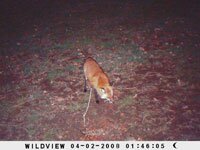
This red fox feasted on Humphreys' leftovers.
REMOTE PHOTO BY COURTENEY STUART
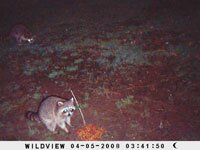
REMOTE PHOTO BY COURTENEY STUART
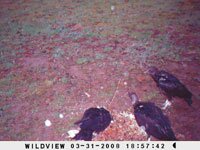
REMOTE PHOTO BY COURTENEY STUART
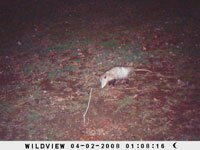
REMOTE PHOTO BY COURTENEY STUART
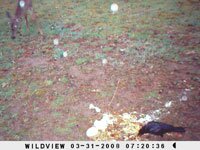
REMOTE PHOTO BY COURTENEY STUART
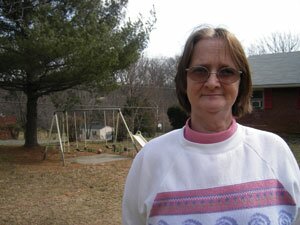
Susie HumphreysFILE PHOTO BY COURTENEY STUART
#